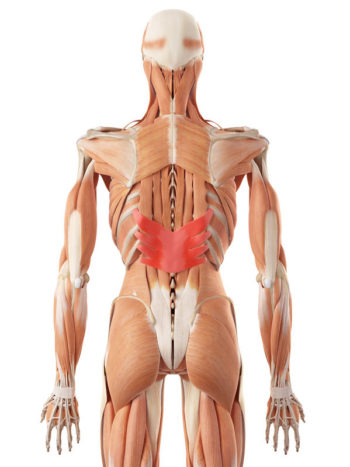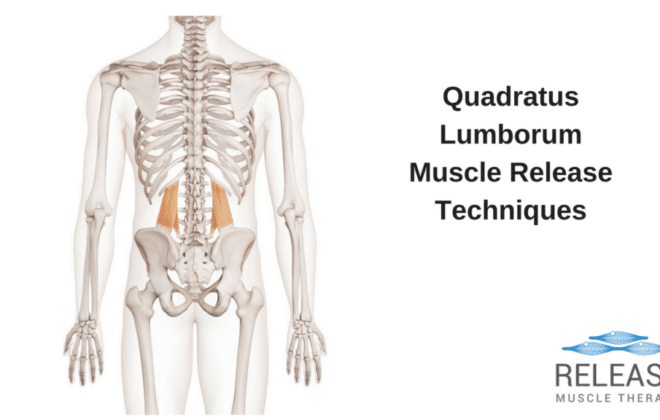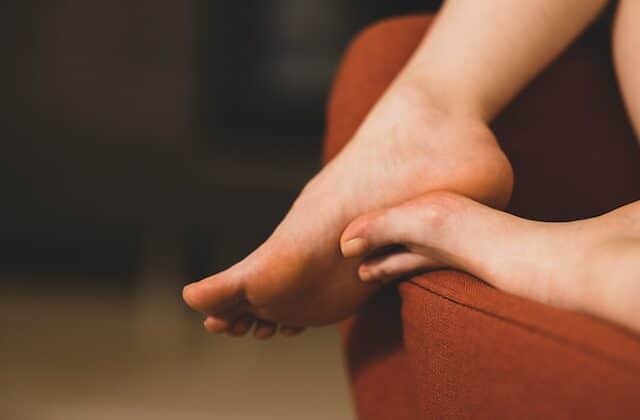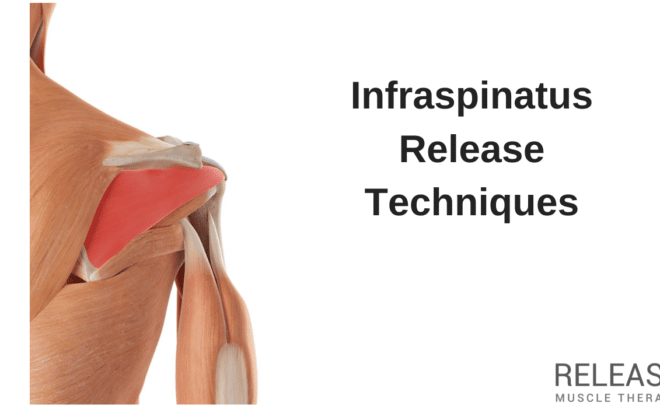Serratus Posterior Inferior Pain – How To Fix
Did you reach for something and suddenly feel a sharp spasm in the lower part of your back, slightly to the side of the spine? At the bottom of the ribs, and when you breathe in really deep you can feel it?
You might be dealing with the Serratus Posterior Inferior muscle. Serratus posterior inferior strain isn't too uncommon. Its often related to mid-back/scapular region tension issues as well.
Serratus Posterior Inferior Pain
The serratus posterior inferior usually creates a localized pain pattern. It doesn't generally refer pain around the ribs or down the back.
Serratus posterior inferior muscle pain symptoms tend to show up right over the muscle itself.
Since this muscle is an accessory respiratory muscle (it assists with end stage exhalation of the lower ribs when breathing), repetitive patterns that involve rib movement which breathing may be a trigger for spasm or cramp.
Serratus posterior inferior spasms can be the result from exercises involving a heavy respiratory demand, in particular full exhalation. This muscle is involved in end range exhalation of the lower ribs.
Early in my career I would refer to this as the "swimmer cramp" muscle because it appeared common to swimmers.
Due to its location on the lower ribs, serratus posterior inferior pain can be particularly uncomfortable and finding a position of relief is often challenging.
Serratus posterior inferior pain on right side tends to be slightly more common than on the left side. This may be related to right handed-ness, but as I explain in other articles humans tend to be a bit more right side dominant regardless of handed-ness.
If you suspect a possible serratus posterior tear (likely due to direct trauma), then be sure to get checked out by your doctor before attempting to do anything with this muscle.
Now that you see where this posterior inferior serratus is located, let's take a look at a simple positional release technique over a swiss ball.
This muscle is difficult to access because of its location. It is influenced by rib movement, so in order to get it to relax, you'll have to position your body specifically, then use breathing to move the lower ribs and relieve serratus posterior pain.
The swiss ball side bend works great for the positioning. As shown in the video, you will need to turn your upper body slightly forward to get the stretch into the lower ribs. Breathe deeply to affect the Serratus Posterior Inferior. I often times find this stretch to help, but during acute spasm of the muscle, hands-on massage techniques are necessary to get a full release.
Serratus Posterior Inferior Muscle Massage Therapy
This muscle is quite thin, and trying to self-massage it with a foam roller or tennis ball can be too painful. So, one of the best ways to address tension in the serratus posterior inferior muscle is via massage therapy.
Here is a demonstration:
Serratus Posterior Inferior Muscle - Related Links:
Serratus Posterior Inferior Exercise
Since the serratus posterior inferior's job is to draw the lower ribs inward and downward, they can be exercised naturally during breathing exercises.
It may be challenging or impossible to directly focus on this muscle in isolation, but forced exhalation may influence this muscle strongly to some degree.
An example would be using the Power Lung exercise device, or simply using a balloon. The resistance on exhale (especially toward the end phase of exhalation) may contribute to increased activity in the serratus posterior inferior muscle.
In addition, since it also connects the spine and ribs, this muscle is responsible for assisting in extension and rotation.
One exercise that would fit this description is the one arm dumbbell or cable row.
Tags In
Sam Visnic
Most Popular Posts
Categories
- Deep Gluteal Pain Syndrome (8)
- Deltoids (2)
- Foam Rolling (2)
- Glutes (9)
- Hamstrings (5)
- Hypnosis for Pain (3)
- Lats (2)
- Levator Scapulae (4)
- Lifestyle (8)
- Massage Therapy (39)
- Mobility (21)
- Movement and Exercise (19)
- Muscles (22)
- Nutrition (2)
- Obliques (1)
- Pain (25)
- Pectorals (3)
- Piriformis (3)
- Plantar Fasciitis (11)
- Psoas (11)
- Quadratus Lumborum (3)
- Quadriceps (2)
- Rhomboids (3)
- Sciatica (1)
- Serratus Anterior (1)
- SI Joint (14)
- Sternocleidomastoid (1)
- Stretching (18)
- Subscapularis (1)
- TMJ (2)
- Trapezius (1)
- Uncategorized (12)











